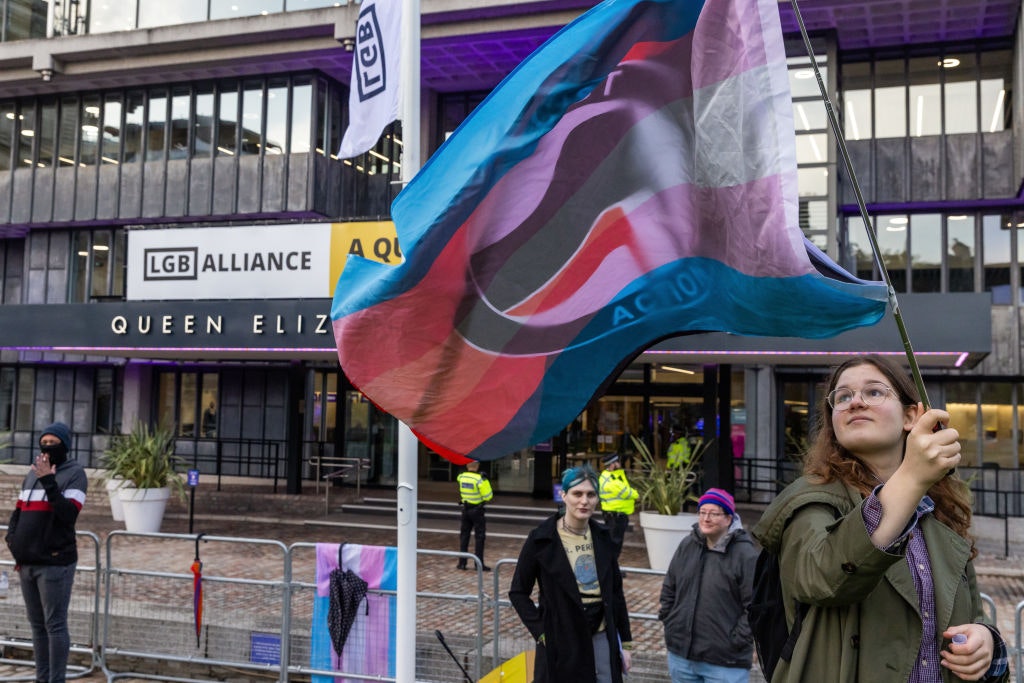We aren’t being served
The closure of Jenners of Edinburgh is an object lesson in how to kill the department store
Who killed the formerly beloved “Edinburgh institution,” Jenners? The question obviously matters to the department store’s 200 current employees whose jobs are in jeopardy. Less urgently, it also troubles its former employees, of whom I am one. It matters too for Edinburgh’s precious sense of itself, particularly its superiority over Glasgow (and almost all other sizeable British cities – but let’s stick to Glasgow). To the less parochial, Jenners’ fall is a further trend indicator for the imperiled future of large department stores in Britain. Who lives, if Jenners dies?
First let’s identify the culprit. There are three suspects. Is it the villainous virus known as Covid-19 which has struck on other high streets and is still at large? Or what about Anders Holch Povlsen, the Danish billionaire who owns the building and wants to turn it into a hotel? Then there is the British retail king Mike Ashley, whose House of Fraser operates Jenners and owns the brand. And what was the deadly weapon? Did Jenners fail to “move with the times” or did it move with them all too enthusiastically, erasing what made it worth treasuring?
The spectre of Covid hangs over the last months of Jenners’ life (it is due to cease trading in May, if it ever restarts trading before then). But House of Fraser – which bought Jenners from its family owners in 2005 – had plans to downsize Jenners and move it to the new-build millimetre-thick glitz of the St James Quarter shopping precinct back in November 2019. That was a month before the existence of a coronavirus in Wuhan was notified to the WHO. So, the business was on the skids before Covid greased the skates.
It is part of Frasers Group’s public relations exercise to imply that Jenners’ problems stem from the unreasonableness of the building’s owner, Anders Holch Povlsen. A Frasers Group spokesman has said as much, grumbling that “the landlord hasn’t been able to work mutually on a fair agreement.”
In happier times, Jenners was known as the “Harrods of the North.”
Povlsen, one of Scotland’s largest landowners, has made no secret of his desire to partially repurpose the Jenners building – one of the finest examples of Victorian commercial architecture in Britain – into a mixed use offering, with parts of it becoming a hotel and roof-level restaurant. Has his toughness on the rent successfully winkled Jenners out of the building so that he can realise his plan?
The answer appears to be “no.” Frasers was offered a significant rent reduction and a rent-free lockdown period in order to keep Jenners in situ. Povlsen has always made clear the value he places on restoring the building to its former glory and to keeping it associated with the Jenners brand. That makes sense commercially as well as sentimentally since Jenners has occupied the site for over 180 years (and in the current purpose-built masterpiece since the 1890s). To separate building and shop would be the equivalent of removing any association between Liberty’s and its Tudor-revival palace off Regent Street. Both assets would be diminished by the severance.
Povlsen wants to combine a hotel and department store in the building, not purge it of its retail heritage. That makes sense given the high proportion of its 200 square feet interior that could not easily be subdivided into fenestrated bedrooms. In particular, the galleries enclosing Jenners’ magnificent tiered atrium naturally work best for their intended purpose as a showcase of wares. Povlsen’s people claim they are looking for alternative operators to keep a department store going there. But as to whether that store would trade under the name “Jenners” they descend into ambiguous language. They own the Jenners building, but Mike Ashley owns the Jenners brand.
Hopefully he has a price for the name – which otherwise has minimal value if the shop ceases trading. But would it matter if Jenners ceased to be Jenners?
When I worked there as a summer hire in the late 1980s (orders & deliveries department: “yes Mr Harvey-Jamieson, we have your glass jar of whisky-soaked pears here. Er. Somewhere here.”) it purported to be the oldest independent department store in the world. The Douglas-Miller family had owned it since the nineteenth century and were – or so we assumed – inseparable from it. Periodically they would walk the floor, with a Captain Peacock figure hovering attentively within range for consultative purposes and to provide the occasional name prompt. No assistant was too lowly to avoid their words of encouragement, even the increasingly harassed-looking young chap below stairs in orders & deliveries.
Such a Grace Brothers’ culture is easily mocked. But it helped sustain an esprit de corps based on the belief that we, the latest trustees of Jenners good name, were maintaining standards. It made us feel we were an enduring part of Victorian Edinburgh. Sure, we heard tell that the t&c at John Lewis were better and the staff there were actually partners in the business. But did Mr John Lewis himself move amongst them, sharing anecdotes of inter-generational experience? We suspected not. In Jenners we served as well as trusted. We were the quality.
Failing to ride market trends as the twenty-first century commenced, the decision of the Douglas-Miller family to cash-in this heritage in 2005 ensured Jenners’ descent into irrelevance. The new owner, House of Fraser, never demonstrated the slightest knowledge or interest in what made Jenners special. Instead, with one-size-fits-all head office logic they began turning it into any other branch of House of Fraser. Experienced buyers who had the measure of things for twenty years or more departed. The once famous food hall was franchised-out. What was menswear – Harris tweed or Irish tweed sir? – somehow not only lost its panelling but became a temple to artificial fibres. Pride of place in the luggage display was a massive suitcase covered in kissing lips. The youth market was targeted. And missed.
In 2018, Mike Ashley’s Sports Direct bought out the Frasers chain from administration. I doubt Mr Ashley reduced morale to zero by attempting small talk with any of the longer-term staff at Jenners, but I was left in no doubt that he had all but completed what previous House of Fraser management had commenced last autumn when I paid my final visit to the store. My wife and I sadly passed through a near deserted department store that had been reduced to a shoddy simulacrum of every other unimaginative and rightly doomed retail outlet that offers broad-market wares that could be bought more easily and cheaply online.
Pride of place in the luggage display was a massive suitcase covered in kissing lips
When we speak of Jenners and what it brought to Edinburgh – how it helped define Edinburgh – we speak of it before it passed from a family’s care to a chain’s indifference. Jenners was special when Morningside ladies lunched there, ascending (if my 1970s’ childhood memory serves me right) in a lift operated by a liveried old gent, even although the lift in which he served out his yo-yoing life could comfortably fit only two people. But you have to move with the times. And in Jenners’ case that has been a fatal accommodation. Its management followed the wrong herd.
A similar, and earlier, lowering of ambition and standards at Debenhams ended this week with the permanent closure of all its department stores nationwide. Only its brand and website have been acquired to provide an online-only business for the fast fashion firm, Boohoo. That fate will not befall Jenners, if only because its website does not exist – Frasers having lazily rolled it anonymously into the bucket-shop House of Fraser website, whose design deploys the same attention to aesthetics as T.K. Maxx online but without the latter’s more sensitive appreciation of palette.
In happier times, Jenners was known as the “Harrods of the North.” But it could have adapted to changing tastes and shopping patterns by following the example of the Piccadilly grocer with ambition, Fortnum & Mason. Bought by the Canadian Weston family in the 1950s, it is now in the portfolio of their holding company, Wittington Investments. Rather than trying to be a Sainsbury’s without the ease of parking, Fortnums recognised the importance of retaining its Piccadilly location, and why its heritage, quality and style give it high value definition in the market. Fortnums has duly prospered despite retail changes, appealing to a monied younger generation as well as traditional old timers, to Londoners as well as tourists.
Besides Fortnum & Mason, Wittington Investments also has the majority stake in Associated British Foods, the owner of the discount clothing chain, Primark. Wittington has the wit not to confuse the two shopping brands. There is still money – old, middle aged, and new – in Edinburgh. If only Frasers Group had shown Wittington’s ambidextrousness, Jenners might now be the Fortnums of the North.
Enjoying The Critic online? It's even better in print
Try five issues of Britain’s most civilised magazine for £10
Subscribe














